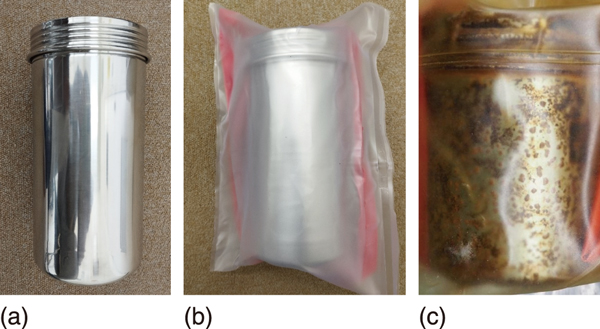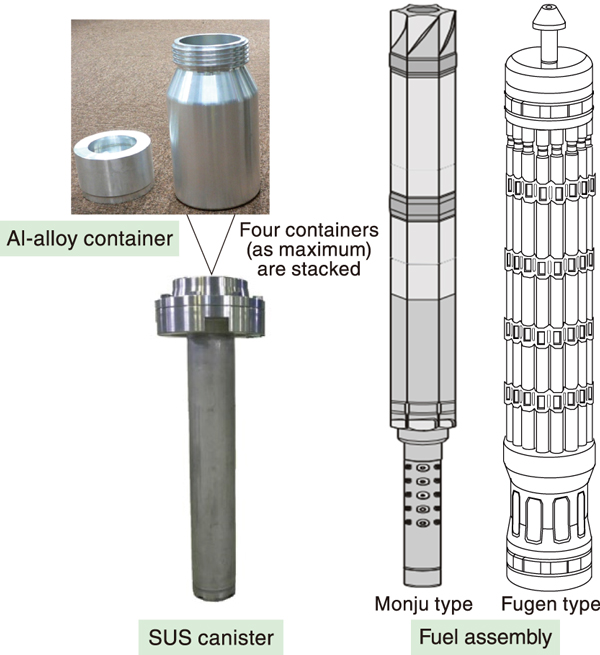
Fig.1 Stainless-steel SUS container corroded because of the PVC bag

Fig.2 PVC-free methods for storing nuclear materials
The Plutonium Fuel Development Center stores nuclear materials mainly in the form of uranium (U)-plutonium (Pu) mixed oxide (MOX). Studies on the properties and fabrication of MOX fuels for irradiation tests were performed in the Plutonium Fuel Development Facility (PFDF), while driver fuels irradiated in experimental reactors were fabricated in the Plutonium Fuel Fabrication Facility (PFFF) and the Plutonium Fuel Production Facility (PFPF). In the PFDF and PFFF, nuclear materials are packed into stainless-steel (SUS) containers (Fig.1(a)), and then, the SUS containers are packed in polyvinyl chloride (PVC) bags for storage (Fig.1(b)). Although the PVC bags are used considering their advantages as a flame retardant and their ease of handling, they can be damaged by mechanical shocks, leading to contamination accidents in controlled areas. Further, these bags should be inspected and replaced regularly because PVC undergoes degradation, releasing chlorine that causes corrosion of the SUS containers (Fig.1(c)), which is further described later.
Hence, the storage method using PVC bags should be abandoned. We are now shifting to a storage method that uses metallic and airtight containers as well as the storage of nuclear materials in the form of fuel assemblies (Fig.2). In the storage method using metallic and airtight containers, nuclear materials are directly packed into aluminium (Al)-alloy containers. A maximum of four Al-alloy containers are stacked into an SUS container, which is called a canister. The canisters are then aggregated to the latest facility of PFPF and kept in a storage facility for a long-term. This storage method does not require inspections or replacement of PVC bags, thereby realizing safer and more economical storage.
Some of the nuclear materials contain moisture/organic materials. They can generate hydrogen gas by radiolysis and cause internal pressurization of the airtight container. Furthermore, chlorine-contaminated nuclear materials have been found despite storage of the materials in SUS containers. The chlorine contamination is attributed to the radiolysis of PVC. The corrosions occasionally found on the outer surface of the SUS container are also caused by chlorine (Fig.1(c)). To remove impurities including chlorine, nuclear materials are heat-treated; after chlorine removal is confirmed, the nuclear materials are packed in canisters for storage.
As mentioned above, the shift to PVC-free storage toward the safe and long-term storage of Pu is ongoing. The experience and knowledge obtained these activities are important for operating plants and research facilities where Pu is used. Therefore, we will continue to share the information with overseas research laboratories and also release information on the activities as an outcome of technical development.
(Shun Hirooka)
<Previous: 10-3 | Next: 11 Research on Nuclear Safety and Emergency Preparedness>